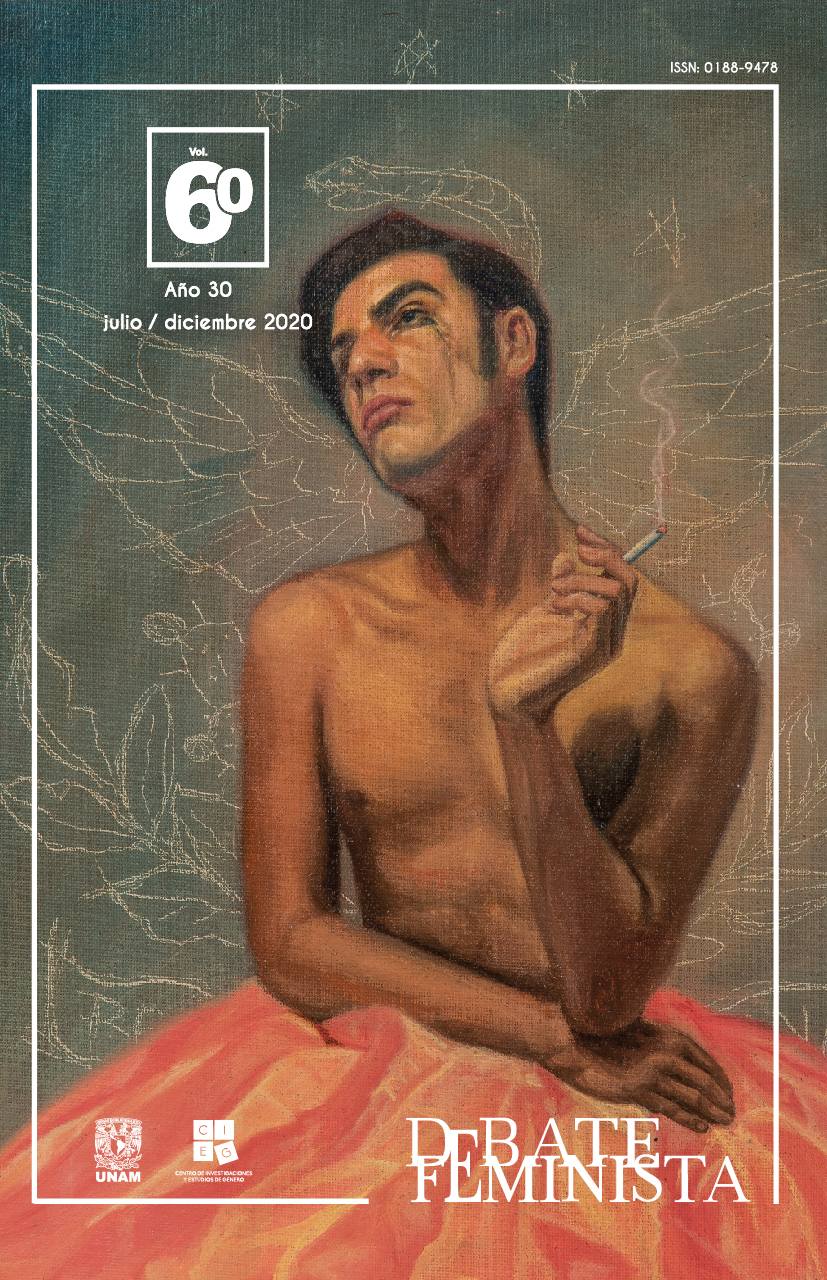Towards a new gender metaphysics
Main Article Content
Abstract
This text formulates a novel proposal about what gender is. To this end, it criticizes various metaphysical models on the issue that have been gaining influence within Anglo-Saxon feminist philosophy. In short, these models are evaluated in light of two controversies feminisms are undergoing today: a) should feminism be gender abolitionist? and b) does gender identity reify gender roles? The hypothesis of this text is to point out that the functionalist biases of the models being criticized lead them to prejudge these issues, ignoring other aspects associated with gender in the process. To prevent this unfortunate consequence, this text concludes by taking up elements of various feminist philosophies that permit a more complex conception of what gender is.
Keywords: Gender; Metaphysics; Functionalism; Body image; Desire
Article Details
Esta es una publicación bajo la licencia Creative Commons Attribution-Non Commercial-No Derivatives 4.0 International (CC BY-NC- ND 4.0). Para mayor información sobre el uso no comercial de los contenidos que aquí aparecen, favor de consultar http://creativecommons.org/licenses/by-nc-nd/4.0/
References
Braidotti, Rosi. (2015). Feminismo, diferencia sexual y subjetividad nómade. Madrid: Gedisa.
Butler, Judith. (2011a). Gender Trouble: Feminism and the Subversion of Identity. Nueva York: Routledge.
Butler, Judith. (2011b). Bodies that Matter: On the Discursive Limits of Sex. Nueva York: Routledge.
Chalmers, David, Manley, David, y Wasserman, Ryan (comps.). (2009). Metametaphysics: New Essays on the Foundations of Ontology. Oxford: Oxford University Press.
Connell, Raewyn y Pearse, Rebecca. (2018). Género desde una perspectiva global. Valencia: Publicacions de la Universitat de València.
Dworkin, Andrea. (1981). Men Possessing Women. Nueva York: Perigee.
Grosz, Elizabeth. A. (1994). Volatile Bodies: Toward a Corporeal Feminism. Bloomington: Indiana University Press.
Guerrero Mc Manus, Siobhan. (2018). “El pánico y tus ojos que me sueñan: etnografía afectiva de un tránsito de género” en Alba Pons y Siobhan Guerrero (coords.), Afecto, cuerpo e identidad: reflexiones encarnadas en la investigación feminista (pp. 99-130). Ciudad de México: Instituto de Investigaciones Jurídicas de la Universidad Nacional Autónoma de México.
Guerrero Mc Manus, Siobhan. (2019). Lo Trans y su sitio en la historia del Feminismo. Revista de la Universidad, 846, 47-52.
Guerrero Mc Manus, Siobhan. (2019). Transgeneridad y transrracialidad: contrastes ontológicos entre género y raza. Diánoia. Revista de Filosofía, 64(82), 3-30.
Haslanger, Sally. (2000). Gender and Race: (What) are they? (What) do we want them to be? Noûs, 34(1), 31-55.
Haslanger, Sally. (2003). Social Construction: the “Debunking” Project. En Frederick F. Schmitt (comp.), Socializing Metaphysics: The Nature of Social Reality (301-326). Nueva York: Rowman & Littlefield.
Haslanger, Sally. (2011). Ideology, Generics, and Common Ground. En Charlotte Witt (comp.), Feminist Metaphysics: Explorations in the Ontology of Sex, Gender and the Self (vol. 6) (pp. 179-207). Amsterdam: Springer Netherlands.
Korsgaard, Christine. M. (2009). Self-Constitution: Agency, Identity, and Integrity. Oxford: Oxford University Press.
Latour, Bruno. (1987). Science in Action: How to Follow Scientists and Engineers through Society. Cambridge: Harvard University Press.
LeGates, Marlene. (2001). In their Time: A History of Feminism in Western Society. Nueva York: Routledge.
Massumi, Brian. (2002). Parables for the Virtual. Durham: Duke University Press.
Mc Manus, Fabrizzio. (2012). The Structure of Explanations and Counter-Explanations of Homosexuality. The Open Journal of Philosophy, 2(4), 235-243.
Mikkola, Mary. (2011). Ontological Commitments, Sex and Gender. En Feminist Metaphysics (pp. 67-83). Amsterdam: Springer Netherlands.
Millikan, Ruth. G. (1989). An Ambiguity in the Notion “Function”. Biology and Philosophy, 4(2), 172-176.
Poe, Danielle. (2011). Can Luce Irigaray’s Notion of Sexual Difference be applied to Transsexual and Transgender Narratives. Thinking with Irigaray, 111-130.
Pons Rabasa, Alba. (2019). Desafíos epistemológicos en la investigación feminista: hacia una teoría encarnada del afecto. Debate Feminista, 57, 134-155.
Scott, Joan. W. (2007). Gender as a Useful Category of Historical Analysis. En Culture, Society and Sexuality (pp. 77-97). Nueva York: Routledge.
Sveinsdóttir, Ásta. K. (2011). The Metaphysics of Sex and Gender. En Charlotte Witt (comp.), Feminist Metaphysics: Explorations in the Ontology of Sex, Gender and the Self (vol. 6) (pp. 47-65). Amsterdam: Springer Netherlands.
Tuvel, Rebecca. (2017). In Defense of Transracialism. Hypatia, 32(2), 263-278.
van Inwagen, Peter. y Sullivan, Meghan. (2018). “Metaphysics”. En Edward N. Zalta (comp.), The Stanford Encyclopedia of Philosophy, URL =
Weiss, Gail. (2013). Body Images: Embodiment as Intercorporeality. Nueva York: Routledge.
Witt, Charlotte. (2011a). The Metaphysics of Gender. Londres: Oxford University Press.
Witt, Charlotte. (2011b). Introduction. En Charlotte Witt (comp.). Feminist Metaphysics: Explorations in the Ontology of Sex, Gender and the Self (vol. 6) (pp. 1-10). Ámsterdam: Springer Netherlands.
Zahavi, Dan. (2017). Thin, Thinner, Thinnest: Defining the Minimal Self. En Christoph Durt, Christian Tewes y Thomas Fuchs (comps.), Embodiment, Enaction, and Culture: Investigating the Constitution of the Shared World (pp. 193-200). Cambridge: MIT Press.




